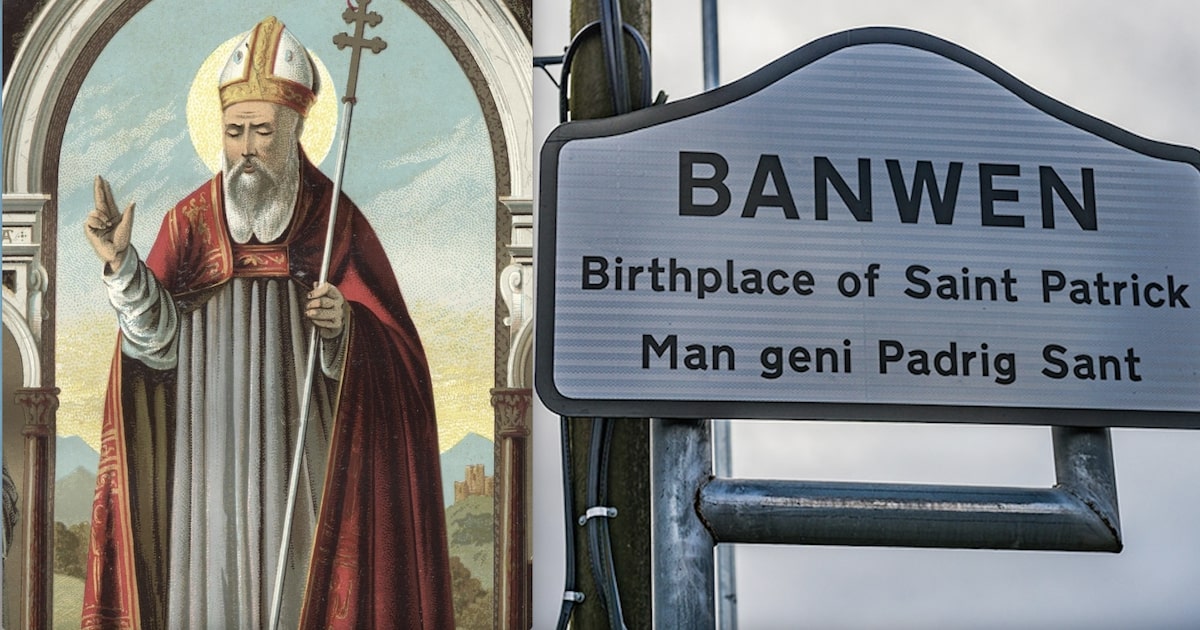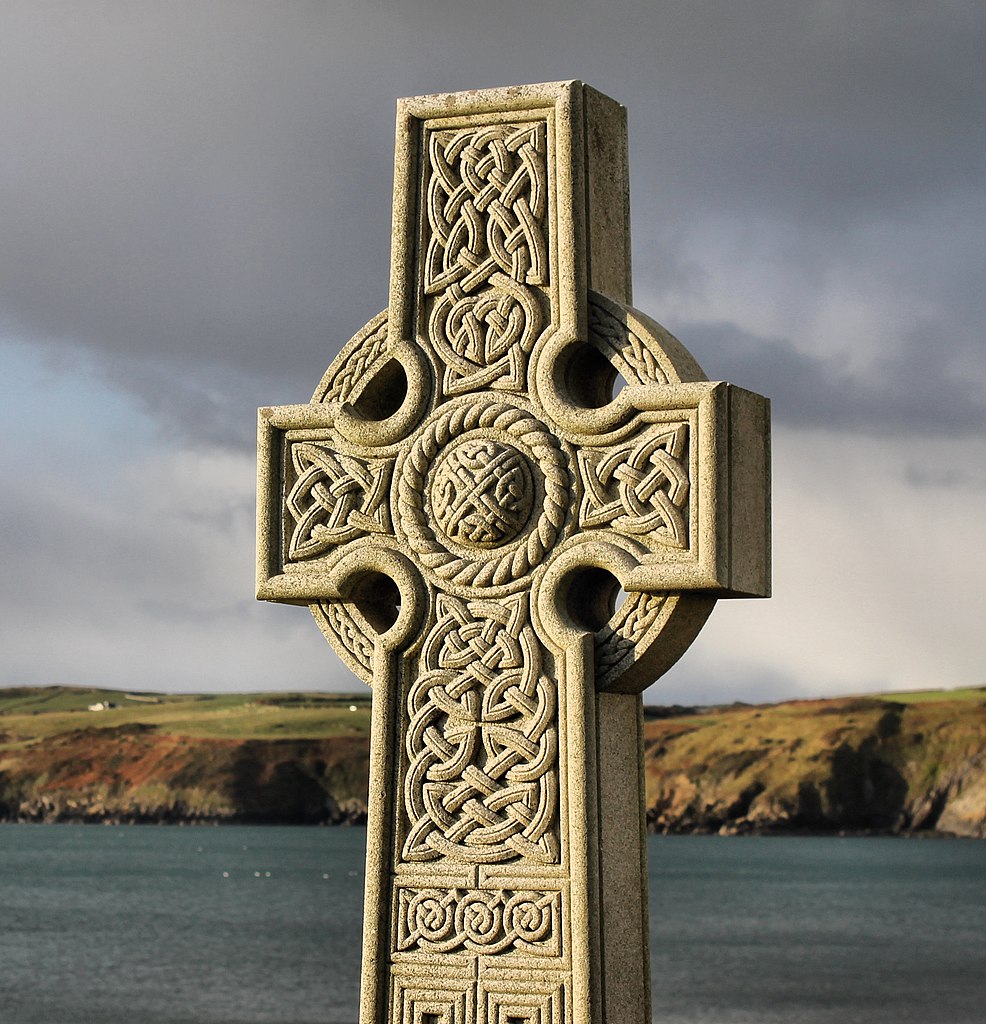The story of St Patrick the patron saint of Ireland… from Wales

Owen Williams
In 387 AD, a saint was born in Banwen, high in Wales’ Dulais Valley.
He would become the Celtic world’s most iconic figurehead. Every March, he is celebrated in towns and cities across the world.
To his adopted Irish home and kin, he is known simply as Saint Patrick.
Born Maewyn Succat (Maewyn: Welsh for devoted friend; Succat: Pagan for warlike), in Bannavem Taberniae (now Banwen), the teenage Patrick (or Padraig) was captured and sold into slavery with “many thousands of people” by a group of Irish marauders that raided his family estate.
Six years a slave, Patrick lived an isolated existence as a shepherd.
Happy Saint Patrick’s Day! 🇮🇪
He’s Welsh, by he way… https://t.co/riDXTlMG5H
— Owen O’Williams 🏴 (@OwsWills) March 17, 2023
The then Ireland was a dangerous, pagan place. Divided into some 100 self-contained Celtic kingdoms.
Those who moved between became known as “grey dogs” and were often taken captive, relinquishing their rights.
Escaping his captors, a dream told Patrick it was time to leave Ireland. Returning home to Wales, he is said to have trained as a priest at Côr Tewdws in Llantwit Major, Britain’s oldest centre of learning.
Once ordained as a priest, he returned to Ireland as a missionary.
Patrick was a powerful, charismatic figure who attracted a large following, moving freely among Ireland’s kingdoms.

Familiar with the Irish language and culture, he adapted Celtic Paganism into his lessons of Christianity, rather than attempting to eradicate native beliefs.
He used bonfires to celebrate Easter, since the Irish were used to honouring their gods with fire.
He also superimposed a sun, a powerful native symbol, onto the Christian cross to create what is now called a Celtic cross.
Patrick’s mission in Ireland lasted approximately 30 years.
It is said that he died in 461 AD, on March 17th, now commemorated as St. Patrick’s Day.
Follow Owen on Twitter to discover more secrets of Wales…
👋 Hi
I realise lots of you are following me for my independence-tinged republican politics/thoughts on Elon Musk.
🏴 But, during lockdown, I set to work gathering many of the secrets, tales and hidden histories of Cymru…
🧵 A thread of threads 👇https://t.co/rDtdGLc2rB
— Owen O’Williams 🏴 (@OwsWills) November 11, 2022
Support our Nation today
For the price of a cup of coffee a month you can help us create an independent, not-for-profit, national news service for the people of Wales, by the people of Wales.







Are you sure there was a language called Pagan?
It’s ironic how the Irish celebrate Welshman St’ Patrick (Maelwyn Succat) around the world every March 17th where we in Wales are denied similar by our Whitehall dictators similar with fellow Welshman Dewi Sant on March 1st. The name Patrick is the corruption Patricius which is Latin for father or holyman was said to have been kidnapped by Irish raiders in the West of Britain. Some say he was taken from what is now Western Scotland or Northern England but Patrick being educated would have known what geographical area he lived and was born in. And don’t forget. The area… Read more »
Genuine question: is there any evidence that Banwen is Bannavem Taberniae?
Gwych if it is, of course.
It’s presented here as fact, but in truth no-one knows where Bannavem Taberniae was. There was a Bannaventa in what’s now Northamptonshire, but that’s not a likely candidate because Patrick was unlikely to come into contact with Irish slavers there. There was a Roman fort called Glannoventa on the Cumbrian coast, which is also associated with Patrick and makes more geographical sense, but I don’t know of any other examples of an initial Gl- turning into a B-. Banwen is a strong candidate in my view – Bannavem > Banwen seems like a much more likely evolution of the name,… Read more »
Thanks for your reply Rhys. I agree, it would be great if it could be proved that Banwen is the correct place, but without evidence it stands just as one of the possibilities. For example, in North Wales, we have an oral tradition of St Patrick coming from Anglesey, but again with no solid evidence to back this up, just like the other places you named. In absence of any new discovery (e.g. inscriptions on a milestone or tombstone in situ, or some newly discovered documentary evidence) we must conclude that the true identity of Bannavem Taberniae will remain a… Read more »
Great article!
“Banwen” has nothing to do with “Bannavem Taberniae”. It is simply the name “Y Banwen”, a local form (along with “Y Banwan”) of “Y Banwaun”, from “panwaun” (= cotton-grass moorland). And “Y Banwaun” is the short version of the full name of the moor which was “Panwaun Maelgwn” (“Maelgwn’s Moorland”), just as many Welsh place names have short forms locally (Pont-y-pridd, Pontarddulais, etc > Y Bont “the bridge”, Llantrisant > Y Llan “the church”, Castell Caereinion > Y Castell “the castle”, etc). See Geiriadur Prifysgol Cymru / The University of Wales Dictionary for more details. There are other examples of… Read more »
Correction: Should read not “Panwaun Maelgwn” but Panwaun Pyrddin (moorland by the river Pyrddin”).
There is more evidence of fairies here than Saint Patrick, at least in local tradition.
J. O. Westwood, “Early Inscribed Stones of Wales,” Archaeologia Cambrensis, series 3, vol. 11 (1865), pp. 60-61.
At the extremity of the ridge (Hir fynydd), where it leaves the mountain, it turns sharp to the north, almost at right angles, so as to cross the Banwan valley at the easiest place. The whole valley is a “banwan,” or boggy place, abounding with snipes, plovers, and occasionally bitterns. At this angle there are gates, as the mountain here becomes enclosed land ; and within the enclosure there are two tumuli , about six or seven yards in diameter. On the larger one was this stone ; whether upright or horizontal, I know not …
These are considered as fairy rings by the peasantry. After descending a very wet and steep side of a hill, where extra pains appear to have been had recourse to, to elevate the causeway above the adjacent ground, on the flat beneath is an old thatched house, known from the olden time by the name of the Tavern y Banwan… I… obtained the following from an old man some thirty years back. This old man abounded with tales of fairies, witches, hobgob¬ lins, et hoc genus omne; and as I delighted to converse with one who had often, as he said, had intercourse with these strange people, he told me ‘that fairies were constantly seen on a fine evening by Clwyda’r Banwan (“the Banwan Gates”), dancing within the rings ; but since the wonderful stone (on which was written fairy language in their characters, for nobody had ever understood them) had been removed from the centre of the largest circle to Gnoll gardens, nobody had ever seen the fairies…
Even Patrick can’t be Welsh! Every historical figure in Wales is either stolen or turned into Myth. Patrick was born in South Wales, this is fact. Richard D Hall and Ross Broadstock have proven this.